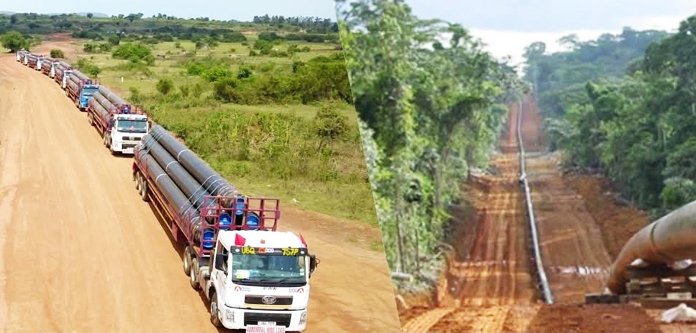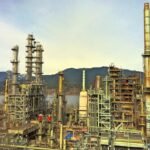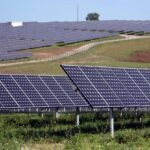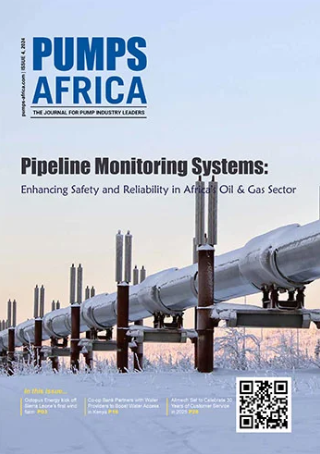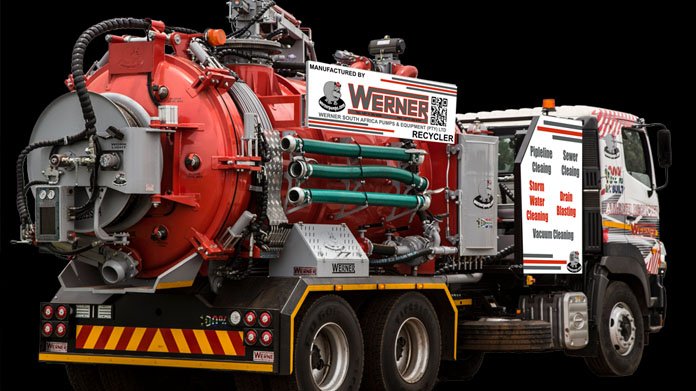The East African Crude Oil Pipeline (EACOP) is reshaping energy and infrastructure in Uganda and Tanzania. At 64.5% completion, the 1,443-kilometer pipeline is on track to become the world’s longest heated crude oil pipeline. Construction began in 2023, and oil exports are expected by 2027.
- 1. Driving Over 60% Growth in Foreign Investment
- 2. Strengthening Regional Integration and Global Influence
- 3. A New Era of Energy Security and Export Power
- 4. Engineering Excellence: The World’s Longest Heated Crude Pipeline
- 5. Unlocking Jobs and Skills for the Future
- Industrial Pumps and Maintenance: A Silent Backbone
- Challenges and Outlook
More than just a pipeline, the EACOP is a monumental economic and engineering project. Its completion promises jobs, foreign investment, energy security, and global recognition for East Africa.
1. Driving Over 60% Growth in Foreign Investment
The pipeline is projected to boost foreign direct investment (FDI) in Uganda and Tanzania by over 60% during construction. This surge is attracting international energy companies like TotalEnergies and China National Offshore Oil Corporation (CNOOC).
For East Africa, this means:
- Thousands of direct and indirect jobs in construction and logistics.
- Upgraded roads, ports, and power infrastructure.
Long-term growth in oil and gas supply chains.
The African Development Bank projects that such projects could increase regional GDP by 2-3% annually through direct investment and related industries.
2. Strengthening Regional Integration and Global Influence
The EACOP connects Hoima, Uganda, to Tanga, Tanzania, boosting cross-border trade and logistics. This enhances East Africa’s ability to attract global partnerships, including European refiners seeking new crude sources.
With East Africa positioned as a strategic energy corridor, both countries gain a stronger voice in global energy negotiations.
3. A New Era of Energy Security and Export Power
By 2027, Uganda becomes a net oil exporter, opening long-term revenue streams and energy independence. Revenues will help:
- Fund national infrastructure and social programs.
- Stabilize domestic energy markets.
- Strengthen regional energy supply chains.
Industry analysts, including Rystad Energy, predict Uganda could earn up to $1.5 billion annually once full production ramps up.
4. Engineering Excellence: The World’s Longest Heated Crude Pipeline
The 1,443-kilometer pipeline must heat crude oil to 50°C to ensure constant flow. This requires state-of-the-art industrial pumps, compressors, and monitoring systems capable of enduring thermal and mechanical stress.
To meet these demands:
- High-temperature lubricants and greases are mandatory.
- Predictive maintenance technologies will prevent shutdowns.
- Specialized equipment providers, including Verder Pumps and similar suppliers, will play a critical role in supporting infrastructure.
5. Unlocking Jobs and Skills for the Future
Beyond construction, the project will create thousands of skilled jobs in pipeline monitoring, pump maintenance, and logistics. Local training programs are being launched to develop expertise in thermal pipeline technology, ensuring that East Africans lead future energy operations.
Industrial Pumps and Maintenance: A Silent Backbone
Behind the scenes, industrial pumps and lubricants keep EACOP operational. Without proper maintenance, inspection, and predictive analytics, the pipeline risks costly downtime.
For manufacturers and suppliers, this is a frontier market opportunity—from pumping solutions to condition monitoring systems.
Challenges and Outlook
Environmental groups, including Greenpeace Africa, have raised concerns over wildlife corridors and community displacement. The project must maintain transparent environmental safeguards and implement renewable power solutions for heating systems to minimize its carbon footprint.
By 2027, the EACOP will not only enable oil exports but also position East Africa as a leader in energy logistics, unlocking unprecedented trade opportunities, regional economic integration, and stronger bargaining power in global markets.
At 64.5% completion, the East African Crude Oil Pipeline is not just an oil corridor—it’s a monumental and transformative project for Uganda and Tanzania. When oil begins flowing in 2027, East Africa will have built more than a pipeline. It will have secured jobs, investments, and energy independence, fueling industrial growth, accelerating infrastructure development, attracting international partnerships, and inspiring investor confidence, ultimately cementing its powerful role in shaping the future of the global energy economy.

